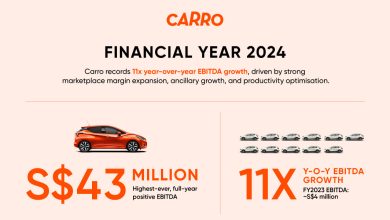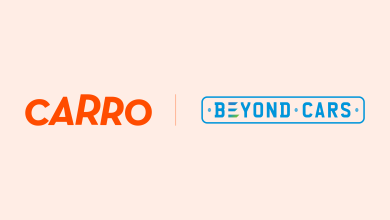DTC Daily: Carro Urges Interoperability Between Martech Tools for Better Insights
This article first appeared on DTC Daily, written by Eileen Yu.
Singapore-based automotive marketplace Carro will have an easier time extracting insights from its marketing campaigns if current adtech and martech tools interoperate.
These tools generate significant cost savings, driving down cost per lead since they help reduce wastage, according to Carro CMO Manisha Seewal. The distribution of ads, for instance, could be better optimised to ensure brands were reaching out to the most number of consumers, she said in an interview with DTCDaily.
Seewal said she tracks all ad and marketing spend in real-time using tools such as Google Ads, to monitor cost per lead and the amount she spent on a daily basis, as well as Google Analytics to assess whether her spending was translating to sales.
However, insights gleaned from Google could not be integrated with data from Facebook. “What could improve is that these tools work and speak with each other because they currently don’t…[the insights] stay within their own platform,” she noted. “As a marketer, there’re always these two big monster budgets to manage.”
And while some brands would invest to work with a third-party or consulting firm to pull together numbers from the different platforms “and give you some fancy charts”, she said these still were too disjointed.
She noted that, even within Google’s web platform, there was no guarantee insights from Google Display Network also would apply to YouTube or Gmail. “That’s always my challenge,” she said. “We’re willing to spend marketing dollars in reaching out to customers, but that may or may not always translate to insight.”
In addition, spam bots increasingly were popping up, she said, pointing to a recent campaign in which this problem surfaced. She initially had thought the campaign failed because her service agents were unable to reach several of the leads generated.

Manisha Seewal, CMO, Carro
“I literally had to go in and look at the data, lead by lead, to see why the conversion was so bad and realised they were [the work of] bots,” she explained. “If I hadn’t looked at these numbers, the money [spent on the campaign] would have been wasted.”
She eventually received a refund from the media owner involved in the campaign.
Acquiring customers through trust
Much of the company’s marketing efforts were concentrated on customer acquisition and raising brand awareness. Specifically, significant focus went towards user engagement to address scepticism consumers, as well as car dealers, typically had dealing with big-ticket items via an online platform.
Seewal noted that building trust was a key challenge she had to grapple with as CMO. She said Carro worked to overcome this by investing in bigger headcounts in emerging markets, where its sales teams spent time nurturing relationships with dealers from ground up.
Content and user interface on its marketplace also were localised to make it more palatable for the markets in which it operated, including Indonesia and Thailand.
In addition, it used technology to make its processes more transparent so trust could be built once users saw that there was transparency.
Because Carro operates in an industry steeped in tradition, Seewal said customer acquisition was always tougher than retention and the age-old tradition of word-of-mouth remains the most effective way to get new customers to try its platform.
The startup would, however, regularly acquire customers via search, programmatic, and social media platforms including Facebook, which it uses to cultivate brand personality, and LinkedIn, which its employees tap to share company updates, she said. Apart from running campaigns on YouTube, it also ran ads on traditional media such as radio, she added.
Seewal said: “Previously, we were quite focused on SEM (search engine marketing) because it was the fastest way to get customers driven by intent. What has changed since is that we’re now [focused on] growing a community, say on Facebook, and the brand look-and-feel is consistent to what you see on LinkedIn and YouTube.”
Now three-and-a-half years old, Carro hires some 350 across three Asian markets, including Thailand and Indonesia.
Asked what gaps in the market that still needed to be plugged, Seewal pointed to the need to digitise the sales process for car dealers. “It’s still very paper-heavy and not as transparent and agile. If you want to buy or sell a car, the process isn’t the same if you work with one dealer to another,” she explained. “We want to digitise this whole process.”
She added that doing so also would streamline processes and drive down costs, potentially expanding the reach and accessibility for car sellers and buyers. For example, an Indonesian customer living in Surabaya might be more willing to pay for a seller in Jakarta to deliver his car.
Apart from digitisation, on the customer side, user interface could be further improved across all markets, Seewal said. This was especially critical because, in terms of consumer experience, Carro was competing not only with players within the same trade, but also with online players in other industries such as banking.
She noted that customers now were able to use fingerprint ID to authenticate payments and would expect the same experience when they purchased or leased cars online.
She explained: “That’s where the user experience still requires some handholding and isn’t as streamlined as we wish it to be. Why? Because we’re not just [talking about] buying a lipstick. People are more heavily invested [in the purchase of cars]. They don’t want to just see the car, they want to come down and smell the car…kick the tyres and hear the engine. There’s no way I can digitise that. It’s a very high-touch industry.
“We’re not trying to change that, but what we want to do is make the process more efficient,” she said, adding that augmented and virtual reality technologies could address only some of these requirements. “Your connection with a car comes from sitting in it, hearing the engine sound, smelling it, and driving it to feel how it responds. AR and VR can bring you to the doorstep, after that, you’ll need to actually get inside the car.”
Tapping data to reward customers
Asked if there were any learnings from e-commerce players in the region such as China’s Alibaba and JD.com, Seewal said these sites had done a good job in personalising journeys for their customers.
These online marketplaces are able to capture information from when customers first connects with the brand and personalise their journey based on that data. “I think that’s something we can do a better job at,” she acknowledged, but noted that data from cars-related transactions were considerably lower in volume and would take time to scale.
It was critical then to better utilise the data that was available and use the insights to improve service delivery for customers, she said.
Carro currently gathers data relating to the demand and supply of cars on its platform as well as financial data, such as credit scoring and rating, from its sister company, Genie, which handles financing processes for dealerships.
Carro also collects data on customers who signed up for its car subscription service. In March 2019, it introduced a subscription-based service that allows customers to pay a monthly fee to drive a car, without having to fork out extra for the associated costs of car ownership including road tax, insurance, and maintenance.
The startup now was exploring the use of telematics so, based on their driving behaviour, the data could enable customers to enjoy subsidies on their subscription fees if they had a high safety driving record or were on the roads less.
People also liked: 5 PAIN POINTS OF CAR OWNERSHIP FOR EXPATS IN SINGAPORE 4 WAYS CAR SUBSCRIPTION IS BETTER THAN CAR OWNERSHIP PROS AND CONS OF CAR SUBSCRIPTIONS WHAT’S THE DIFFERENCE BETWEEN LEASING AND CAR SUBSCRIPTION?




